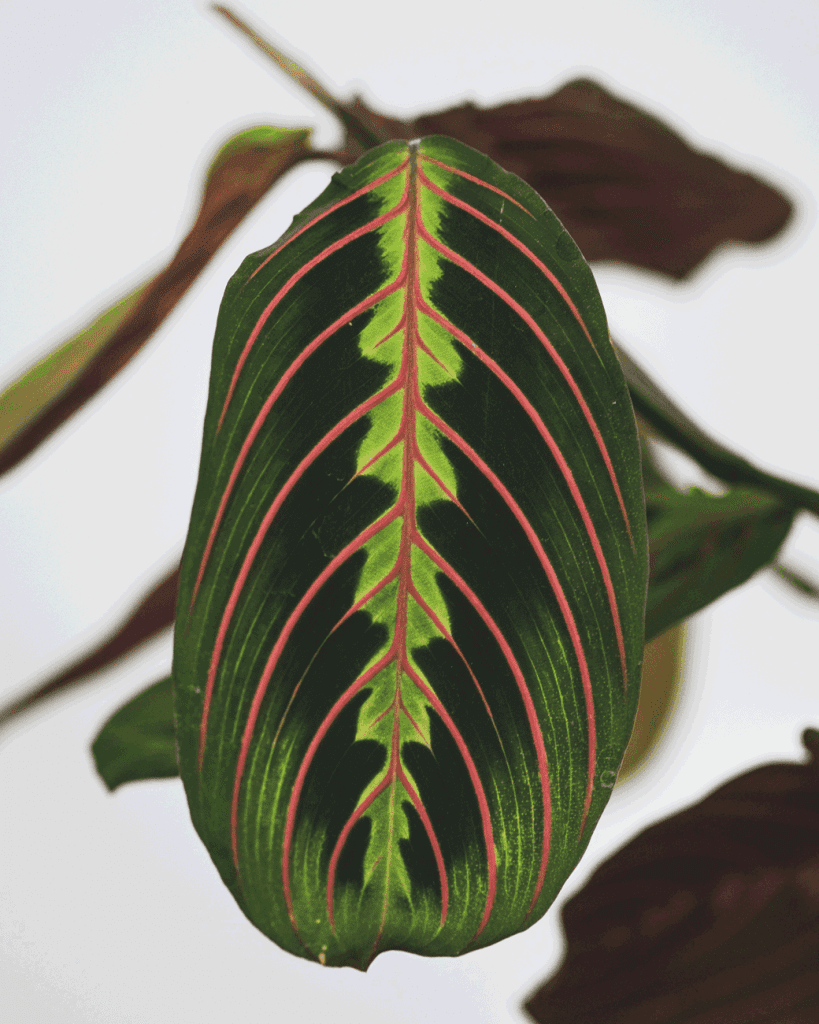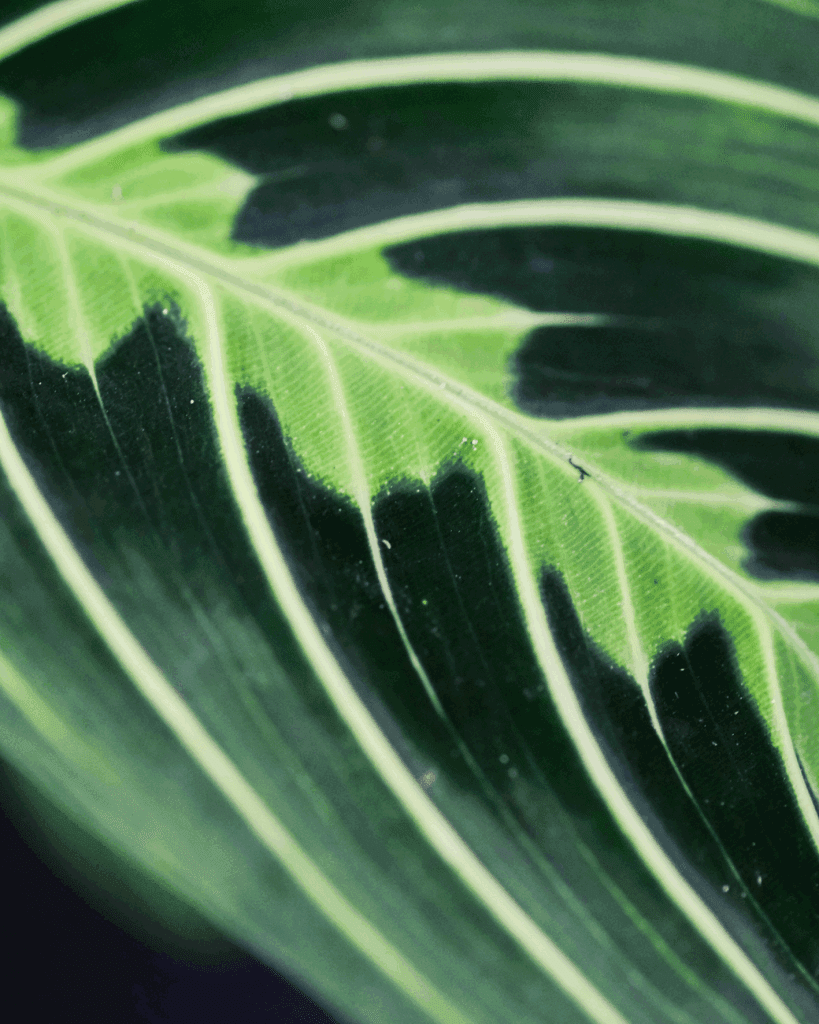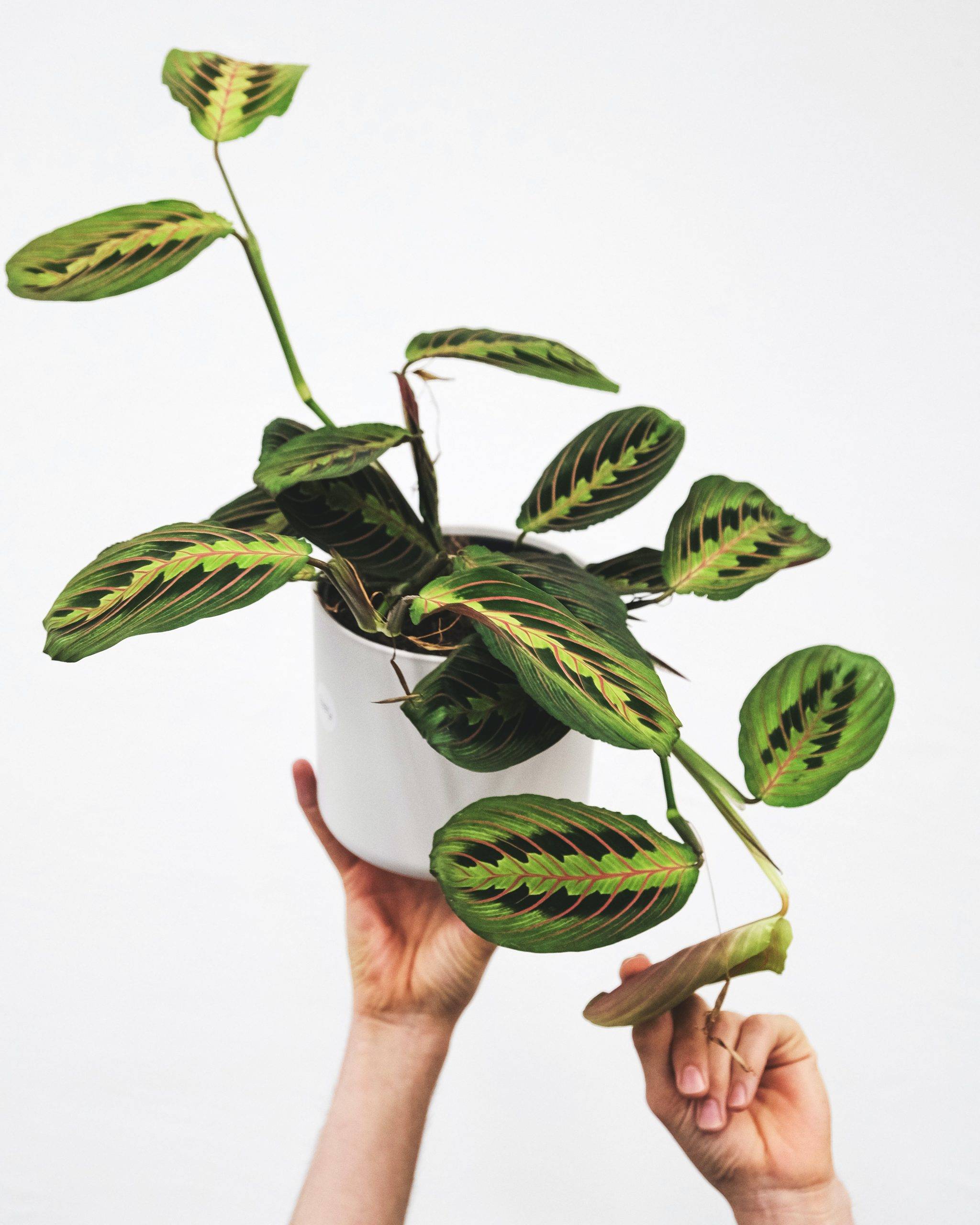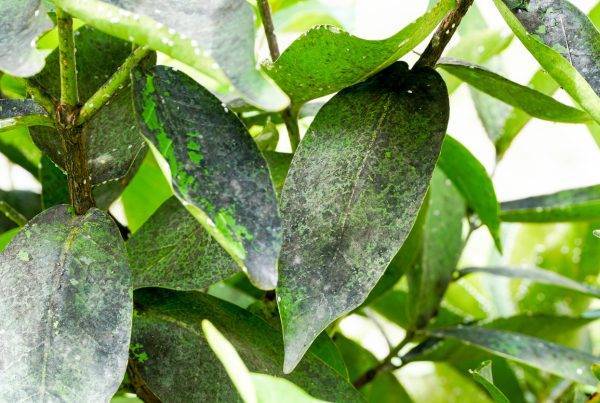Maranta leuconeura is a stunning plant with beautiful variegation on the leaves. Its undersides are a beautiful shade of purple. An easy care plant that is not to be confused with their finicky cousins the Calatheas. Native to tropical forests in central and South America.
| Nyctinasty | Water | Light | Humidity | Temp | Food | Flowers | Soil | Problems | Repot | Propagation | Toxicity |

Nyctinasty
Nyctinasty is the process whereby the leaves open and close due to changes in temperature or changes of light intensity. Maranta’s nyctinastic movements are caused by darkness. The leaves close up at night and open the following morning. They have developed a joint called a pulivinus at the base of each leaf, it resembles a swollen node. This joint can swell and shrink which creates the pressure needed for the leaf to move. It is not yet fully understood why plants have these movements although it is thought that during the day the plant can move its leaves to take full advantage of the sun while at night it may be for protection. Maranta gets its nickname ‘Prayer Plant’ from this process. As the movement resembles praying hands.
Water
The maranta likes to be in moist soil. Allow the top inch of soil to dry out before watering. Avoid allowing the soil to fully dry out for this plant!
Light
It will do best in bright indirect light. It can also tolerate lower light conditions. In its natural habitat it is a tropical understory plant and so direct sun can cause scorching of leaves. It can also cause its beautiful variegation to fade.
Humidity
Maranta is a humidity lover! Average household humidity is fine. However it can start to show signs of stress if being under watered in average household humidity. If you can provide a little extra humidity it will appreciate it!
Temperature
18-30degrees. Average household temperatures are fine, avoid placing it anywhere it will get a lot of fluctuations in temperature.


Food
Feed once a month while actively growing.
Maranta Flowers
Maranta is grown for its striking foliage. They have very small delicate blooms that can be white or purple and appear on slender stalks. If the conditions are favorable they can produce flowers indoors. Producing flowers takes a lot of energy from the plant and so they can cause older growth to die back. Because of this many people choose to prune away flower stalks on maranta. Of course this is entirely up to you! You could also keep the flowers and let it go to seed.
Soil
It needs a very well draining soil to avoid root rot. They are native to tropical canopy conditions and so a rich blend of 1/3 potting soil 1/3 compost and 1/3 perlite will keep your Maranta happy.
Common Problems
- As they like to be kept moist they are prone to fungal problems which love warm moist environments. Allowing the top inch of soil to dry out will help to minimize the risk of fungal problems like root rot, fungus gnats, powdery mildew.
- Mealybugs are also a risk due to moisture as they are drawn to soft growth from too much water.
- Color’s on leaves fading – too much sun
- Leaves Curling – over/under watering
Repot
Maranta can grow quickly given the right conditions. It needs a repot every 1 to 2 years. Check your plants roots before repotting to avoid overpotting.
Maranta Propagation
Propagating Maranta in soil or water is easy. Take a cutting at an angle just below a node.
If propagating
- in water once the roots are about an inch long, pot it up into some potting soil and follow care guidelines as above.
- in soil keep soil consistently moist until there is some resistance when you (gently!) pull on the leaf.
If you are lucky enough to get flowers on your maranta and want to collect the seeds. When the flowers have dried up is the right time to collect!
Toxicity of Maranta
Maranta is not toxic to humans or pets. However ingesting large amounts of any plant may cause stomach upset in many pets.
Happy Gardening!





